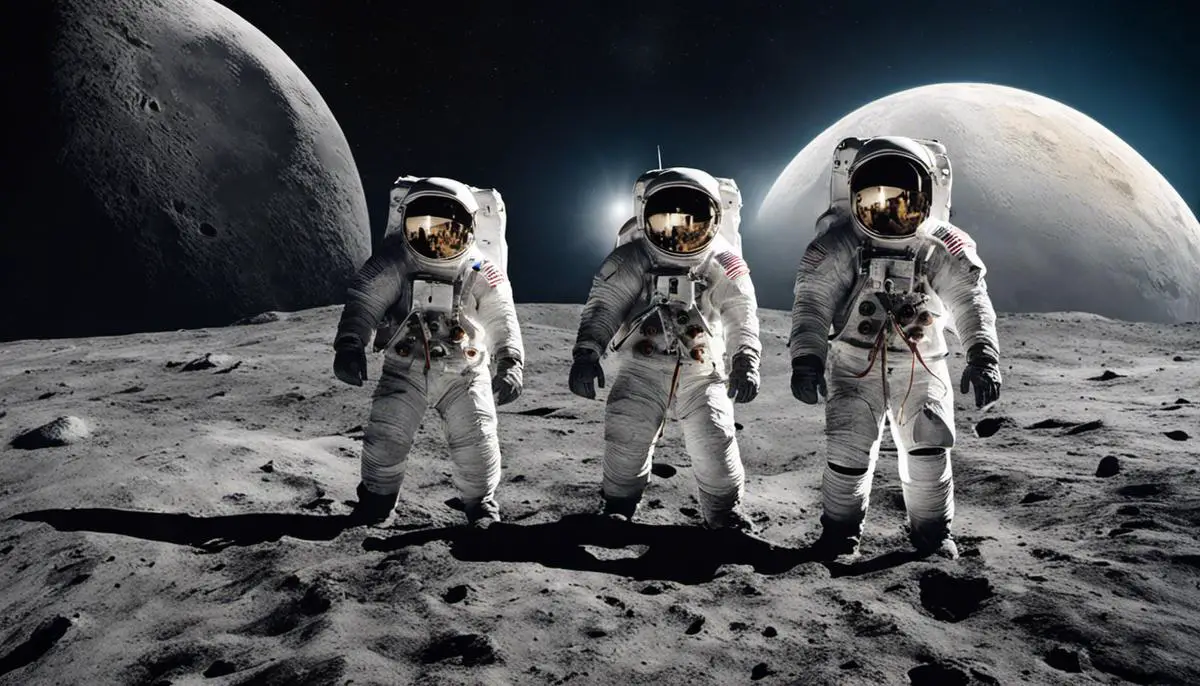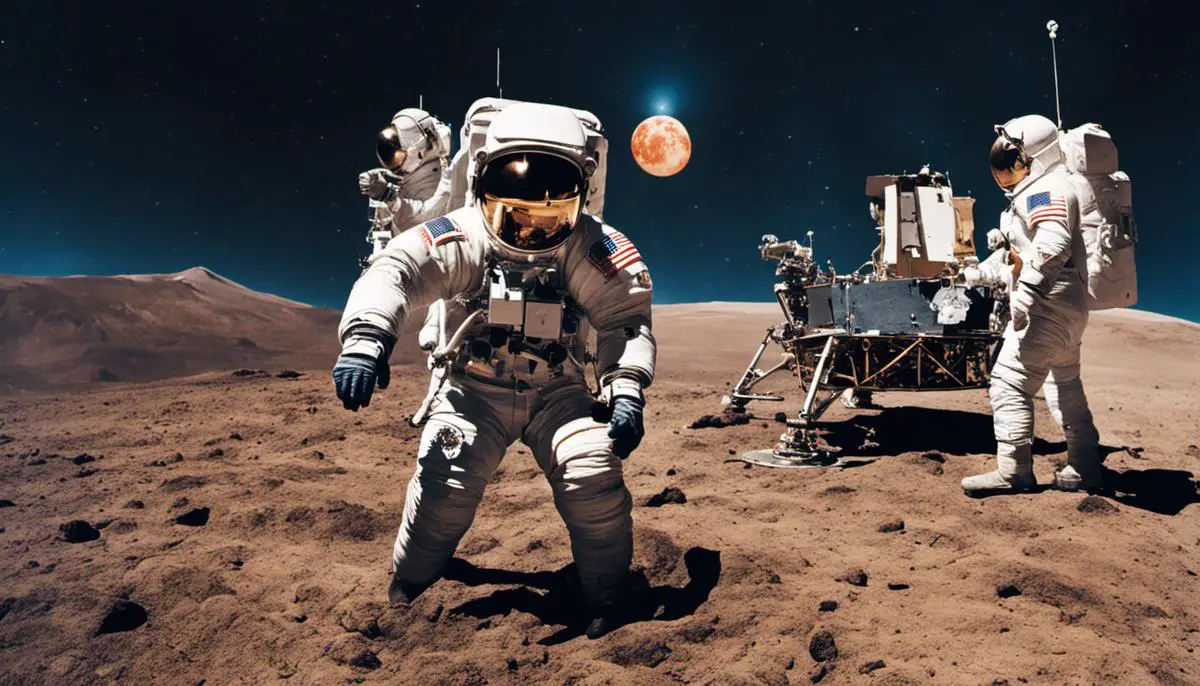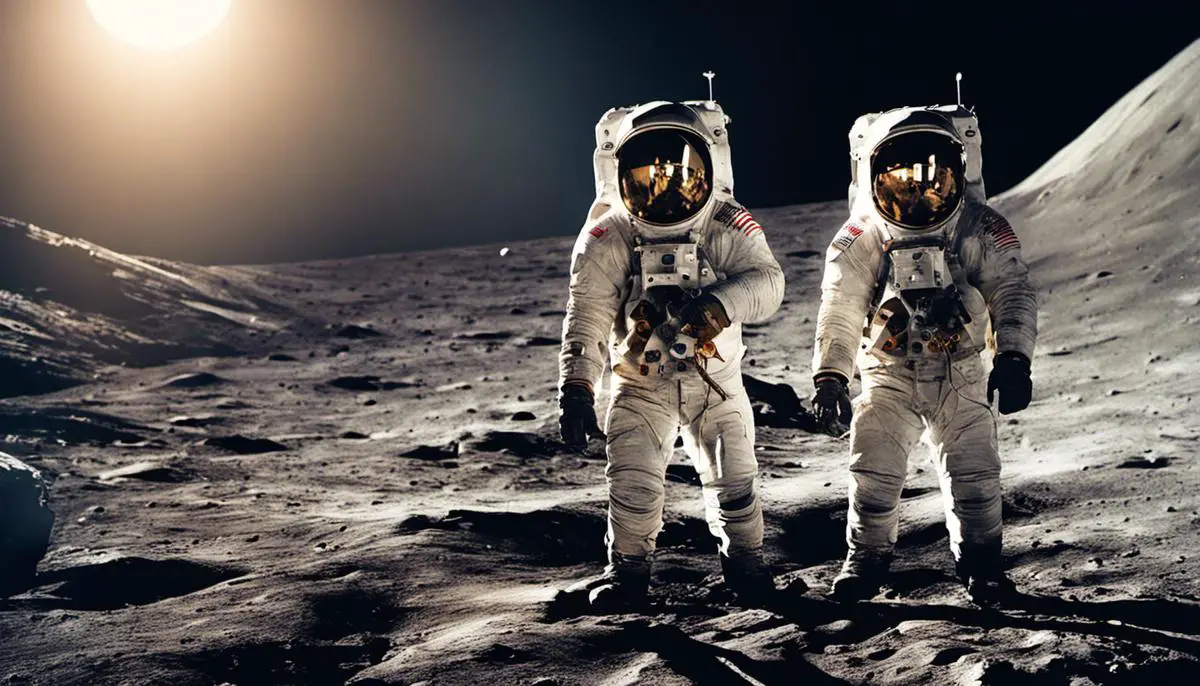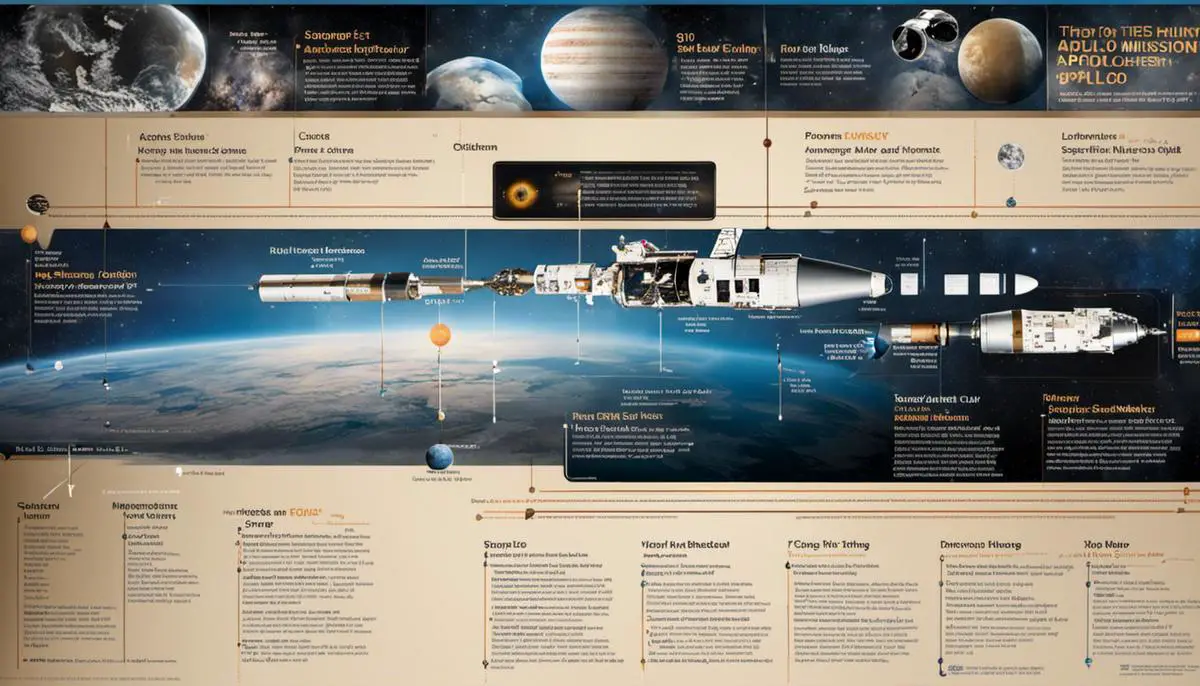From the dawn of time, the celestial bodies have captivated the human spirit, inspiring an insatiable curiosity that eventually gave birth to the vast field of astronomy. The 20th century, marked by the technological grandeur of the space race, witnessed a revolution in our understanding of the universe that surrounds us. A pivotal role in this tremendous transformation was the Apollo missions, the series of space missions that successfully landed humans on the Moon for the first time. These missions not only changed the way we look at our world but also reshaped the entire field of astronomy. With unprecedented technological advancements, immense scientific discoveries, and unanticipated impacts on research, the Apollo missions were instrumental in shaping the present and future of astronomical studies.
Contents
The Apollo Missions: A Brief Overview
The Decision for Apollo Missions
The Apollo program, run by NASA, the United States’ space agency, conducted eleven space flights between 1968 and 1972, with the aim to land humans on the Moon and return them safely to Earth. This ambitious endeavor was initiated by President John F. Kennedy on May 25, 1961, in the midst of the Cold War as a demonstration of America’s technological prowess and a symbol of its determination to win the Space Race against the Soviet Union.
Challenges and Achievements
The Apollo program faced various hurdles, including technological problems, budgetary restraints, and the tragic Apollo 1 fire in 1967 that resulted in the deaths of three astronauts during a practice drill. Nevertheless, the program made significant strides in advancing both space exploration and technology. The crowning achievement came with Apollo 11, when astronauts Neil Armstrong and Buzz Aldrin became the first humans to land on the moon on July 20, 1969. Later missions expanded on this accomplishment with longer stays and more extensive exploration on the lunar surface.
Technological Advancements
In pursuit of the moon-landing goal, the Apollo program led to several technological advancements. These included the development of new types of spacecraft, launch vehicles, and tools for spacewalks and moon landings. The Saturn V rocket, the largest launch vehicle ever produced, was developed specifically for the Apollo missions. Moreover, the lunar module, or the “Eagle”, was designed to land on the moon’s surface and return the astronauts to the command module orbiting above.
Astronomy and the Apollo Missions
The Apollo missions had a profound impact on the field of astronomy. Lunar samples returned by the Apollo astronauts provided unprecedented insights into the moon’s geological history, aiding in our understanding of both the moon and its relationship to Earth. Apollo 15, 16, and 17 missions included a suite of geophysical instruments, known as the Apollo Lunar Surface Experiments Package, which measured seismic activity, heat flow, and magnetic fields on the moon’s surface.
Moreover, the missions drastically changed our understanding of outer space. Observations made by astronauts and measurements taken by spacecraft expanded our knowledge of phenomena such as solar winds and cosmic rays. The photography from the Apollo missions is still vital to astronomers today, offering high-resolution images of the lunar surface and also of Earth, which are invaluable for studies of our own planet.
The Triggering Role of Apollo Missions in Scientific and Political Arenas
The Apollo missions were conducted not only as a show of American dominance in scientific and technological prowess over its Cold War counterpart, the Soviet Union, but also to fulfill many scientific objectives. Among these were to dig deep into the moon’s geology, examine its structural intricacies, and fathom the repercussions of sustained lunar habitation on humans. The wealth of knowledge gathered from these missions has been instrumental in enhancing our understanding of Earth as well as our entire solar system. The achievements of the Apollo missions serve as a beacon of human inventiveness and the relentless spirit of discovery, reshaping our perspective of the universe that surrounds us.

Technological Advancements During Apollo Missions
Pushing Technological Frontiers: The Cumulative Impact of Apollo Missions
The astronomical strides made in technology, courtesy of the Apollo missions, were notably influential and impacted various disciplines, including the field of astronomy. The program’s relentless emphasis on innovation in technology, mandated by the uncharted territory of space exploration and the pressing demands of the space race, set in motion a series of advancements that continue to resonate today.
Advancements in Computing
One of the most critical developments was in the field of computing. The Apollo Guidance Computer (AGC) was one of the first integrated circuit-based computers. It was incredibly resilient and compact which enabled the onboard calculations required for navigating the Lunar Module to and from the moon’s surface. This quantum leap in miniaturization, along with the advancements in software algorithms that marked the inception of “software engineering,” had a profound influence on the computing landscape. Furthermore, the need for data processing capabilities for deep space exploration led to an exponential growth in computing technology which revolutionized the field of astronomy by providing enhanced capabilities for data analysis and modeling.
Materials and Telemetry
Additionally, the Apollo missions brought advancements in materials used in aerospace engineering. Moving beyond Earth’s atmosphere and braving the extreme conditions of space demanded new materials which had to be lightweight, resilient, and heat resistant. An example of this is the invention of “heat shields” that protected astronauts upon re-entry into Earth’s atmosphere. This development also benefited the field of astronomy by providing the materials required for long-duration space telescopes and probes.
Similarly, telemetry advancement was crucial during Apollo missions, allowing real-time exchange of information between astronauts and mission control on Earth. The Apollo telemetry system developed techniques to transmit large volumes of data over extraordinary distances, a foundational technology in modern radio astronomy.
Rocket Propulsion Systems
The development of powerful and reliable rocket propulsion systems was a hallmark of the Apollo program. The huge Saturn V rocket that propelled the Apollo missions to the Moon remains the tallest, heaviest, and most powerful rocket ever produced, even half a century later. Engine innovations, fuel technologies, and mastery over launch and landing mechanics added new dimensions to spacecraft engineering. The technology provided the capability to launch larger, more advanced telescopes and satellites into space, thereby enriching observational astronomy.
In Retrospect
The Apollo missions, targeted at lunar exploration, triggered an unparalleled revolution in numerous technological spheres. This program instigated advancements in computer miniaturization, the making of robust materials, the improvement of telemetry, and the boosting of rocket propulsion systems. These developments turned out to be seminal not just for space exploration but also for the wider field of astronomy. Thus, the legacy of the Apollo missions extends much further than the famed moon landings, helping shape the exploratory capacities of contemporary astronomy.

Scientific Discoveries from the Moon
Transforming Moon Studies: The Role of the Apollo Missions
One cannot overlook the monumental role the Apollo missions have played in reshaping our comprehension of Earth’s sole natural satellite- the Moon. These missions revealed crucial information about the Moon’s geological structure, its composition, and the historical cosmic events that impacted it, thereby adding a new dimension to lunar studies.
Moon’s Geology and Composition
The lunar rocks and soil returned by the Apollo astronauts reshaped scientific perceptions of the Moon. These samples, comprised predominately of basalts and breccias, revealed the Moon’s intense volcanic activity about 3 to 4 billion years ago. The discovery of pillowed basalts indicated the presence of lunar lava flows, suggesting the presence of ancient lunar volcanos.
Similarly, the lunar samples enriched our knowledge of the lunar highlands. The dominant rock type, anorthosite, indicated that the highlands were composed of the Moon’s original crust. The chemical analysis further revealed that this ancient crust was rich in calcium, aluminum, and silicon, with a much lower concentration of iron, magnesium, and titanium compared to Earth’s crust.
Lunar Impact Craters and Late Heavy Bombardment
One of the most noticeable features of the lunar surface is its countless craters. Before the Apollo missions, it was thought that these craters were volcanic in origin. However, the analysis of lunar samples clarified that impact events caused these craters, not internal lunar activity. The existence of brecciated rocks and the evidence of shock metamorphism supported this conclusion.
The Apollo-derived data also helped to date these impact events, resulting in the idea of the ‘Late Heavy Bombardment’ – a period approximately 3.9 billion years ago when a larger number of asteroids hit both the Moon and the Earth.
Implications for Solar System Formation Theory
The lunar samples and data gathered by the Apollo missions had broader implications as well. They compelled scientists to revise the then-dominant theories about how the Moon and the Solar System formed. The lack of volatile elements and the specific isotopic composition of the lunar rocks supported the idea that the Moon formed from debris resulting from a massive impact event involving the early Earth.
This theory, known as the Giant Impact Hypothesis, suggests that a Mars-sized body collided with the young Earth, and the resulting debris eventually coalesced to form the Moon. It has become the favored explanation of the Moon’s origin due to its ability to explain the distinctive characteristics of lunar samples.
The Apollo missions significantly broadened our understanding of the Moon, revealing new insights into its geological makeup, the history of its craters, and the mystery of its origin. Additionally, these missions served as a window into the extensive processes that play a part in the evolution of planets and the narrative of our solar system.

Indirect Impact on Astronomy Research
Launching the Age of Deep Space Exploration
Beginning in 1961, the United States launched the Apollo missions, an ambitious endeavor that culminated in several manned moon landings from 1969 to 1972. This marked the ascension into a new epoch in space exploration, stimulating intensified research, sparking renewed interest, and catalyzing technological advancement in astronomy and interrelated disciplines.
At its core, the Apollo program aimed to accomplish a manned lunar landing and ensure a safe return to Earth. Furthermore, this program allowed ground-breaking studies of lunar geology, enabled the discovery of water on the moon, and provided crucial data on life support systems crucial for future explorations into the cosmos.
Adding New Dimensions to Astronomical Research
The Apollo missions significantly expanded our scientific understanding of the moon. The Apollo astronauts collected a total of 842 pounds of lunar rock and soil samples. The analysis of these samples radically transformed our understanding of the moon’s geological history.
Through the detailed mapping of the lunar surface and the analysis of lunar rock samples, it was discovered that the moon had once had a molten “magma ocean.” This pathbreaking finding had far-reaching implications for our understanding of how other celestial bodies, including Earth, may have developed.
Also, the discovery of tiny glass beads on the lunar surface, a byproduct of intense heat from meteorite impacts, opened up new lines of inquiry about our solar system’s history. Understanding the moon’s geology provided critical insights into the general processes that govern planetary evolution.
Influence on Future Space Missions
The success of the Apollo missions directly influenced future space endeavors, perhaps most notably the Mars Rover program. The sophisticated robotic explorers used in Mars missions owe a direct technical and scientific debt to the Apollo missions.
The innovative technology developed for the Apollo missions, such as Saturn rockets and Lunar Modules, set new standards for future space exploration vehicles. The Apollo Guidance Computer, a pioneering digital flight computer, served as a model for subsequent onboard flight systems.
The mission profiles and operational practices established during the Apollo missions, including crew training, mission planning, and ground control procedures, became the blueprint for future space expeditions.
Expanding Understanding of Earth
The Apollo missions also enriched our understanding of our own planet. The iconic “Earthrise” photo, taken during the Apollo 8 mission, significantly shifted perspectives on our own planet’s beauty and vulnerability. The Apollo missions also led to the development of Earth-orbiting satellites for weather observation, telecommunications and global positioning systems.
Satellites, an integral part of the Apollo program, grew increasingly important for studying Earth’s atmosphere, its weather patterns, and its climate system. They helped in identifying and understanding phenomena such as El Niño and global warming, hence contributing to environmental science.
As a result of the Apollo missions, the way we study space was forever transformed. NASA’s goal was not only accomplished when humans landed on the moon and safely returned to Earth, but it also started a new era in astronomy and related scientific fields. Because of these missions, a host of new scientific studies, technological innovations, and deep space explorations came into existence. The influence of the Apollo missions is still present and can be felt in today’s space exploration and astronomy sectors.

The Apollo Legacy
Apollo Missions: The Catalyst for a Revolution in Astronomy
Between 1961 and 1972, NASA launched a series of Apollo missions that marked a turning point in the realm of astronomy. The insights and advancements provided by these missions reshaped our understanding of the universe in extraordinary ways.
A significant achievement of these Apollo missions, specifically missions 11 to 17, was the collection of lunar rocks. The study of these rocks granted scientists an unparalleled understanding of Earth’s lone natural satellite. Through the analysis, scientists discovered the moon’s age, learnt about its geological history, and surprisingly found that it shared a common origin with Earth. The isotopic makeup and age of the lunar soil and rocks consistently disproved a number of earlier theories about the moon’s creation, instead reinforcing the giant impact hypothesis, which suggests that the moon was formed from debris resulting from a colossal impact on Earth.
Technological Advancement
The Apollo missions also catalysed significant technological advancements. To successfully carry out the lunar landings, innovations in spacecraft and mission technology were necessary. This resulted in the development of the Saturn V rocket, one of the most powerful rockets known to humanity. The technologies developed for Apollo missions have further been utilized for subsequent endeavors in space exploration like the Space Shuttle program, the International Space Station, and in planning future Mars missions.
The Apollo missions were also responsible for birthing satellite technology. The missions necessitated advanced mapping of the moon, laid foundation to robotic missions that not only mapped the surface of other planets and distant celestial bodies but also revolutionized telecommunications on Earth.
Impact on Education & Public Interest
The Apollo missions had a monumental impact on educating the general public, particularly in the United States. The missions sparked interest and curiosity about space and contributed to a surge in the number of students pursuing degrees in science, technology, engineering, and mathematics (STEM) fields. The clear demonstration of the practical applications of these fields gave students tangible examples of the potential outcomes of their studies.
Further, these missions clubbed with the intense media coverage, stirred a powerful public interest in space exploration that had never been seen before. The iconic images of the first humans on the moon, the Earth-rise over the lunar surface, and the blue marble image depicting the Earth from space ignited an era of appreciation and concern for our home planet.
Bolstering Modern Research
Today, the Apollo missions continue to shape modern astronomical research. The repository of lunar rocks is still analyzed using modern techniques to provide new insights. The study of these samples continues to refine our understanding about the moon’s magnetic history, interior, and its complicated relationship with the Earth.
In conclusion, the long-standing influence of the Apollo missions on the field of astronomy cannot be overstated. From reshaping our understanding of the moon to empowering technological advancements and inspiring generations, the impact of these missions is still tangible and ever-evolving in the field of astronomy, space explorations and beyond.

A half-century has passed since the Apollo missions, yet the profound impact of these daring space ventures continues to ripple through our exploration of the universe. The scientific discoveries and technological advancements birthed during the Apollo era not only revolutionized astronomy but also influenced various interconnected research fields. The legacy of the Apollo missions continues to inspire scientists, spark public interest, and educate future generations about the mysteries of the cosmos. As we look at the Moon today, it is also a reminder of human potential – a testament to our capabilities when we dare to dream, innovate, and push the boundaries of our knowledge. Within this growth and exploration lies the essence of the Apollo missions’ true gift to astronomy – an unyielding quest for answers that stretches beyond our world and into the depths of the universe.

With a passion for unraveling the mysteries of the moon, Dr. Luna Sterling is a highly-respected astrophysicist, a dedicated lunar enthusiast, and a captivating blogger. After earning her Ph.D. in Astrophysics from the Massachusetts Institute of Technology (MIT), she served as a lead scientist and mission planner for NASA, contributing significantly to various lunar missions.
For over two decades, Luna has been at the forefront of lunar science, pushing boundaries and pioneering discoveries that have enriched our understanding of the moon’s geological history. However, it’s her infectious enthusiasm for all things lunar that truly sets her apart.
In an endeavor to bring the moon closer to everyone, Luna started her blog, “Luna’s Lens: A Closer Look at the Moon.” With this platform, she offers a unique blend of intriguing moon facts, updates on lunar missions, and personal anecdotes from her experiences in the field, all told in an engaging and accessible manner.
Luna’s unique blend of scientific expertise and warm, humorous writing style has transformed complex astrophysics into compelling narratives that captivate her audience. As a gifted communicator, she leverages her knowledge and experience to relate scientific facts to everyday life, thus making her blog a must-read for both seasoned space enthusiasts and curious newcomers.
Interactive and inviting, Luna frequently encourages reader engagement through thought-provoking discussions and a monthly ‘Ask Dr. Luna’ feature, where she personally answers questions about the moon and space exploration. A celestial storyteller at heart, Dr. Luna Sterling’s passion for the moon is as vast as the cosmos she explores, making her an invaluable beacon in the world of lunar science.
